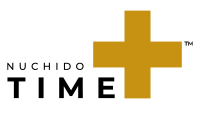Not all NAD+ supplements are created equally. The majority available are NAD+ precursors (any substance the cell can use to synthesise NAD+). However, they don’t address the causes of NAD+ decline as we age.
For an NAD+ supplement to address the fundamental causes of NAD+ decline, it needs to act on the cell’s ability to make and recycle NAD+ and the primary source of this is via the salvage pathway.
Nuchido TIME+ enhances the Salvage Pathway
The Nuchido TIME+ formula contains dried flowers of the Sophora japonica tree, specifically because it contains the flavonoids quercetin, rutin and troxrutin.
Flavonoids are a group of compounds which are known to activate the salvage pathway enzyme NAMPT.
These flavonoids were selected for our formulation based on their ability to activate NAMPT and enhance the cells ability to recycle NAD+ via the salvage pathway.
Another way to increase NAMPT is to activate AMPK (the cells energy sensor) which can be done via compounds such as alpha lipoic acid (ALA), which are also included in the Nuchido TIME+ formulation.
The reason NAMPT activation and enhancing the Salvage Pathway is important is because…..
The Salvage Pathway is the largest source of NAD+
NAD+ is a large molecule so it struggles to the cross over the membranes of many cells, because of this the cell has several pathways which it can use to synthesize NAD+ inside the cell. The salvage pathway is one of the three pathways available to create NAD+ within the cell. The others are the Preiss-Handler pathway and the De Novo pathway.
The salvage pathway is the largest source of NAD+ within cells. When NAD+ is used by the cell it leaves behind waste nicotinamide (NAM) which is then recycled via the salvage pathway back into fresh NAD+ which can be used again.This means that no matter where the NAD+ is made it all ends up at the salvage pathway to be recycled.

When we are young the salvage pathway works efficiently converting waste NAM (which is produced when the cell uses up NAD+) back into fresh NAD+. This reduces the need for extra precursors.
The Salvage Pathway becomes less efficient as we age
The main enzyme which powers the salvage pathway is NAMPT and it is a rate limiting enzyme, meaning the amount of NAD+ the salvage pathway produces is dependent on the amount of NAMPT present.
Studies have shown that levels of NAMPT decline with age and this is responsible for the decreased ability of the cell to recycle NAD+.
Furthermore, this leads to NAM accumulating in the cell as it cannot be recycled meaning the cell must methylate the excess NAM to remove it from the cell. High levels of NAM methylation are not optimal for the cell and can lead to methyl donor depletion.
Research has shown the importance of the salvage pathway to maintaining cellular NAD+ levels. This is an important consideration when it comes to choosing an NAD+ supplement and why part of the Nuchido TIME+ formulation is dedicated to enhancing the salvage pathway - so your cells can recycle NAD+ like they once did.
